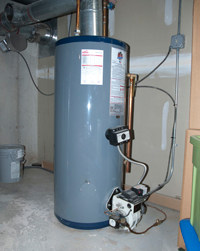Best Practices for Caring for Your Home's Hot Water System
Best Practices for Caring for Your Home's Hot Water System
Blog Article
On this page down the page you'll find a good deal of amazing information on the subject of Tips on Maintaining a Water Heater.

Warm water is important for day-to-day convenience, whether it's for a refreshing shower or washing recipes. To ensure your hot water system runs effectively and lasts much longer, regular maintenance is crucial. This article offers functional tips and insights on exactly how to keep your home's hot water system to avoid interruptions and pricey repairs.
Introduction
Keeping your home's warm water system might seem complicated, but with a few easy actions, you can guarantee it operates smoothly for years to come. This guide covers every little thing from recognizing your hot water system to DIY maintenance ideas and recognizing when to employ specialist help.
Significance of Preserving Your Warm Water System
Normal upkeep not just extends the life-span of your warm water system but also ensures it operates effectively. Ignoring upkeep can cause reduced effectiveness, greater power expenses, and also early failing of the system.
Indicators Your Warm Water System Demands Upkeep
Recognizing when your warm water system requires focus can protect against significant concerns. Keep an eye out for indications such as inconsistent water temperature, unusual noises from the heater, or rusty water.
Flushing the Water Heater
Purging your hot water heater eliminates sediment buildup, improving efficiency and prolonging its life.
Monitoring and Changing Anode Rods
Anode poles stop rust inside the storage tank. Examining and replacing them when worn out is crucial.
Facility Concerns Calling For Expert Assistance
Examples include significant leakages, electrical problems, or if your water heater is continually underperforming.
Regular Specialist Maintenance Advantages
Professional upkeep can consist of extensive evaluations, tune-ups, and ensuring conformity with safety criteria.
Checking and Adjusting Temperature Level Setups
Adjusting the temperature level setups guarantees ideal performance and safety and security.
Do It Yourself Tips for Maintenance
You can perform numerous maintenance tasks on your own to keep your warm water system in leading condition.
Looking for Leaks
Routinely check pipes and links for leaks, as these can cause water damage and greater bills.
Recognizing Your Hot Water System
Prior to diving into maintenance jobs, it's handy to comprehend the standard components of your hot water system. Commonly, this includes the hot water heater itself, pipelines, anode rods, and temperature controls.
Regular Monthly Maintenance Tasks
Routine monthly checks can assist catch minor concerns before they rise.
Testing Pressure Alleviation Valves
Evaluating the stress relief valve guarantees it functions properly and protects against extreme stress accumulation.
Shielding Pipes
Shielding hot water pipes minimizes heat loss and can save energy.
When to Call a Specialist
While DIY upkeep is helpful, some issues need specialist knowledge.
Conclusion
Routine maintenance of your home's warm water system is necessary for performance, longevity, and cost savings. By complying with these suggestions and knowing when to seek professional help, you can guarantee a reputable supply of warm water without unforeseen disturbances.
How to Maintain an Instant Hot Water Heater
Before tinkering with your hot water heater, make sure that it’s not powered on. You also have to turn off the main circuit breaker and shut off the main gas line to prevent accidents. Also turn off the water valves connected to your unit to prevent water from flowing into and out of the appliance. 2. When you’re done, you have to detach the purge valves’ caps. These look like the letter “T†and are situated on either side of the water valves. Doing so will release any pressure that has accumulated inside the valves while at the same time avoid hot water from shooting out and burning your skin. 3. When the purge valves’ caps are removed, you have to connect your hosing lines to the valves. Your unit should have come with three hoses but if it didn’t, you can purchase these things from any hardware or home repair shops. You can also get them from retail stores that sell water heating systems. Read the user’s manual and follow it to complete this task properly. When the hosing lines are connected, open the purge port’s valves. 4. You should never use harsh chemical cleaners or solutions when cleaning your unit. Make use of white vinegar instead. It should be undiluted and you’ll probably use about 2 gallons. 5. Now flush your water heater. This task should probably take about 40 minutes. We can’t give you specific directions for this because the procedure is carried out depending on the type, model and brand of your heater. With that being said, refer to the user’s manual. 6. When you’re done draining the unit, you have to turn off the purge port valves again. Remove the hosing lines that you earlier installed on each of the water valves. Put the valve caps (purge port) back in their respective places and be very careful so as not to damage the rubber discs that are found inside these caps. 7. Now that everything’s back in place, check your user’s manual again to find out how to reactivate your water heating system. 8. Once it is working, turn one of your hot water faucets on just to let air pass through the heater’s water supply pipes. Leave the tap on until water flows smoothly out of it. https://www.orrplumbing.com/blog/2014/september/how-to-maintain-an-instant-hot-water-heater/

As an enthusiastic reader on Water Heater Maintenance Tips You Can't Afford to Forget, I imagined sharing that post was a smart idea. Appreciated our article? Please share it. Help another person find it. I take joy in your readership.
Call Today Report this page